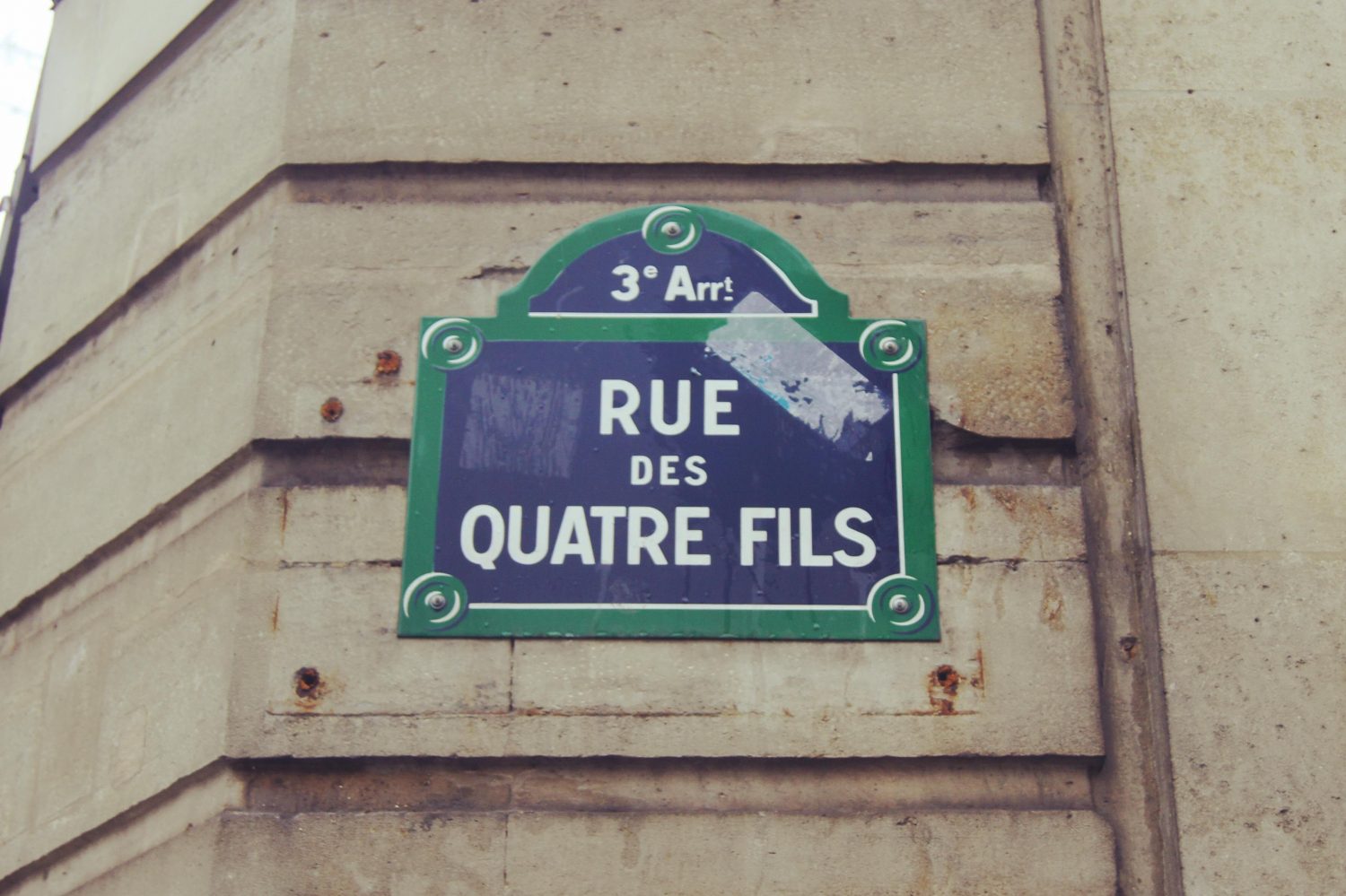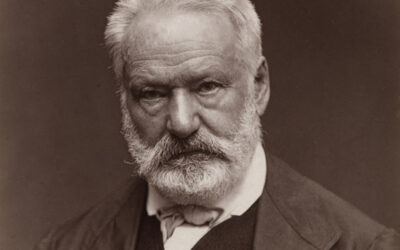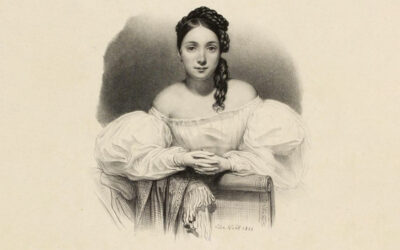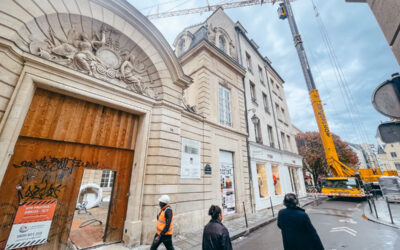But who are the “four-fils” who gave their name to the street which connects those of the Archives and Vieille du Temple to the Café de la Perle?
They are the heroes of a legend from the Middle Ages, which has come down to us thanks to a song of gesture known from the XNUMXth century in a good part of Europe.
They are the sons of the Duke of Aymon, a valiant officer who fought the Saracens (in reality, they were the Basques) alongside Charlemagne
Poor and without resources, this lord did not have the means to offer a horse to each of his four sons: Aalard, Renaud, Richard and Guichard.
For the latter, the frustration is great because they dream of becoming knights.
One day the fairy Orlande appears. She draws a horse on a wall and, when the sun's rays touch the sketch, a horse magically appears.
This steed, called Bayard, becomes the faithful companion of the four brothers.
On the back of their exceptional mount, these boys rescue the widow and the orphan in their native Languedoc.
Learning of their exploits, Charlemagne asks the siblings to come to Paris to compete in a horse race.
Bayard easily won the competition. From then on, Charlemagne wanted to buy the stallion. But the brothers replied: “Keep your gold, we will be satisfied with the honor.”
But one cannot displease the emperor without running into his ruin...
Charlemagne orders the arrest of the four sons. But when the soldiers try to capture them, Aalard, Renaud, Richard and Guichard flee on their magical mount.
Joined in a dead end by the soldiers, Bayard jumps and disappears with the four brothers... through a wall.
The pursuers are stunned: on the wall only a drawing remains of the horse and its four riders, the mysterious and legendary four sons...
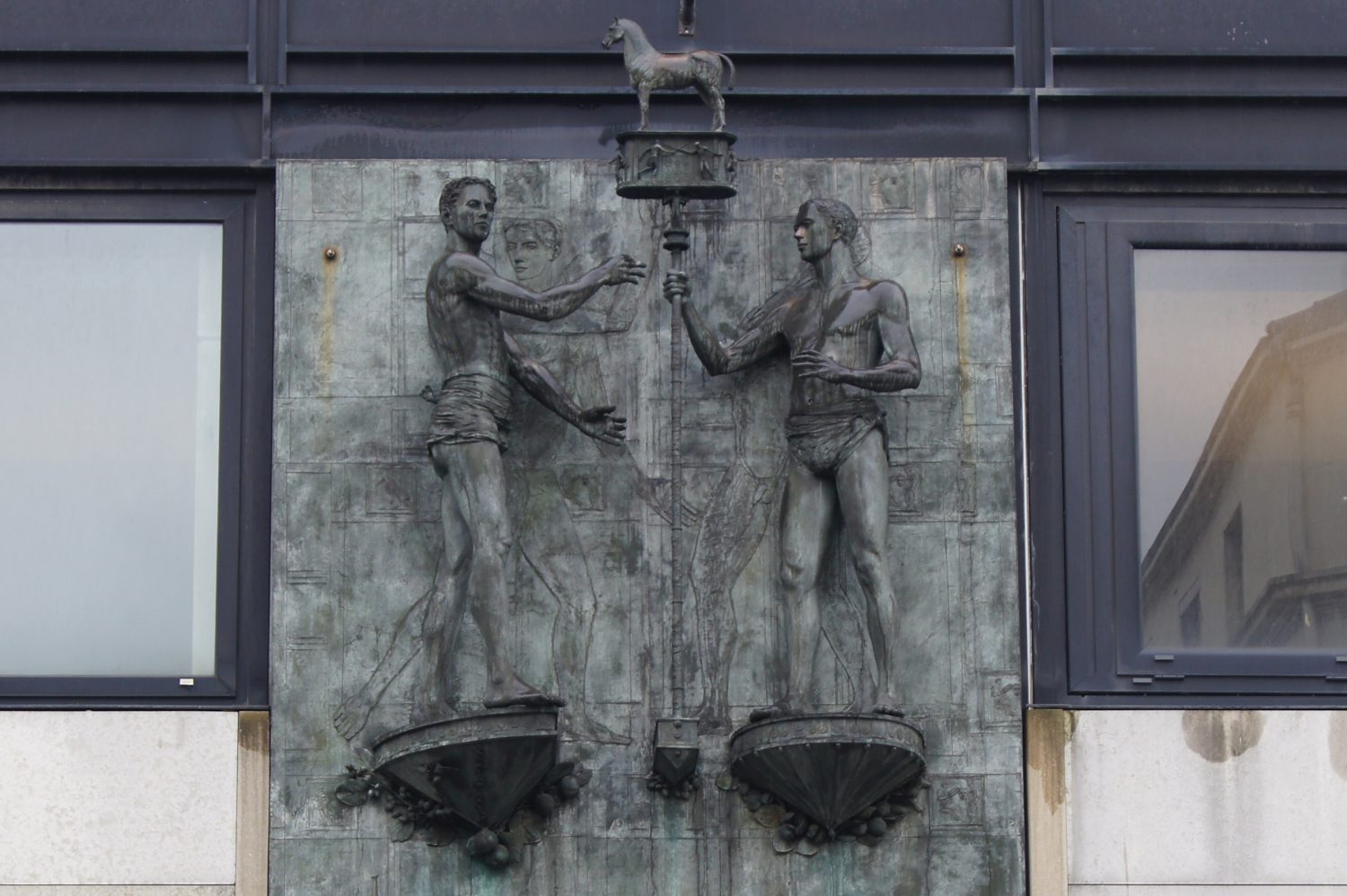
Text: Katia Barillot
Photos: ©Anaïs Costet
FOR PASSIONATES OFUS
Victor Hugo, the writer with a thousand talents
Born in 1802, Victor Hugo became a social writer, a playwright, a poet, a novelist and a romantic designer. Nicknamed the man-ocean then the man-century, he is a political figure and a committed intellectual. He found success with Notre-Dame-de-Paris in 1831 and with Les Misérables in 1862.
Juliette Drouet actress, muse and mistress of Victor Hugo
At 14 rue Sainte-Anastase, from 1836 to 45 and at 12 from 1845 to 48, a few hundred meters from Place des Vosges, lived the muse and lover of Victor Hugo, Juliette Drouet née Julienne Gauvain.
Rue Vieille-du-Temple: the fabulous construction site restarts
A luxury hotel will be created at the end of the work. On the ground floor, the old stables and carriage houses will house the restaurant on the large courtyard, while the first courtyard, on rue Vieille-du-Temple, will feature two businesses continuing its 19th century layout.
NOW ON THE MOOD MARSH
Victor Hugo, the writer with a thousand talents
Born in 1802, Victor Hugo became a social writer, a playwright, a poet, a novelist and a romantic designer. Nicknamed the man-ocean then the man-century, he is a political figure and a committed intellectual. He found success with Notre-Dame-de-Paris in 1831 and with Les Misérables in 1862.
The best tattoo parlors in Marais
Tattooing, an age-old practice, has long been the prerogative of convicts, dock workers, the underworld and sailors. Although it has become democratized, now affecting all profiles and concerning one in five French people, including 16% women compared to 10% men, it still remains taboo due to its definitive and transgressive nature.
Juliette Drouet actress, muse and mistress of Victor Hugo
At 14 rue Sainte-Anastase, from 1836 to 45 and at 12 from 1845 to 48, a few hundred meters from Place des Vosges, lived the muse and lover of Victor Hugo, Juliette Drouet née Julienne Gauvain.

